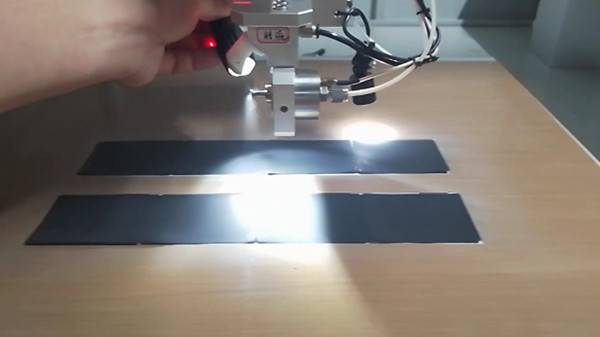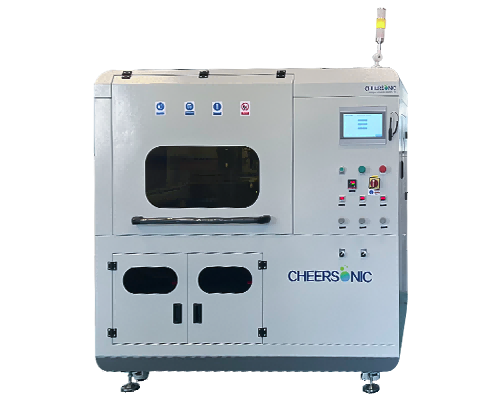A Complete Analysis of the Lithium Battery Slurry Coating Process
A complete analysis of the lithium battery slurry coating process: the innovative power of ultrasonic spraying
In the manufacturing process of lithium batteries, slurry coating is a key process after slurry preparation. Its core goal is to evenly and accurately coat the slurry with good stability, viscosity and fluidity on the positive and negative current collectors. The quality of the pole piece coating plays a decisive role in the key performance of lithium batteries, such as capacity, consistency and safety. According to incomplete statistics, battery failure caused by the pole piece coating process accounts for more than 10% of the many reasons for lithium battery failure, and has always been a hot topic in the industry.
The multi-dimensional impact of the coating process on the performance of lithium batteries
Pole piece coating is the process of coating the evenly stirred slurry on the current collector and drying it to remove the organic solvent. The coating effect profoundly affects the battery capacity, internal resistance, cycle life and safety. In this process, many factors should not be underestimated:
- Control of coating drying temperature: If the temperature is too low, the pole piece is difficult to dry thoroughly; if the temperature is too high, the organic solvent inside the pole piece will evaporate quickly, causing the surface coating to crack and fall off.
- Trade-off of coating surface density: If the surface density is too small, the battery capacity is difficult to meet the standard; if the surface density is too large, it will not only cause waste of components, but in severe cases, the positive electrode capacity may be too large, causing lithium precipitation to form lithium dendrites, piercing the battery separator, and causing short circuit risks.
- Coating size accuracy: If the coating size is improper, the positive and negative electrodes inside the battery may not be fully matched and covered, and the movement of lithium ions during charging is restricted, and the positive electrode capacity cannot be fully utilized. Lithium dendrites may even be generated, causing internal short circuits in the battery.
- Coating thickness consistency: If the coating is too thin or too thick, it will interfere with the subsequent pole piece rolling process, making it difficult to ensure the consistency of battery pole piece performance. At the same time, the safety of the pole piece coating is of vital importance. Before coating, 5S work must be done to prevent foreign matter such as particles, debris, dust, etc. from mixing in, so as not to cause internal short circuits in the battery and lead to serious safety accidents.
Key points for choosing coating equipment and processes
The broad coating process covers a series of complex processes such as unwinding, splicing, traction, tension control, coating, drying, and deviation correction. The coating effect is affected by many factors, such as equipment manufacturing accuracy, running stability, dynamic tension control, drying air volume and temperature curve. When choosing a coating method, it is necessary to comprehensively consider factors such as the number of coating layers, wet coating thickness, rheological properties of the coating liquid, coating accuracy, coating support, and coating speed, and at the same time closely combine the characteristics of lithium-ion battery pole piece coating: double-sided single-layer coating, thicker wet coating (100-300μm), slurry is a non-Newtonian high-viscosity fluid, high coating accuracy requirements, coating support is thin aluminum foil and copper foil, and coating speed is relatively low. Based on these, laboratories mostly use scraper type, consumer lithium-ion batteries often use roller transfer type, and power batteries mostly choose slit extrusion method.
Cheersonic ultrasonic spraying: the new favorite of lithium battery coating
In the field of lithium battery coating, Cheersonic ultrasonic spraying technology is emerging and showing unique advantages. Traditional coating methods have some inherent disadvantages, which ultrasonic spraying can effectively overcome. It uses high-frequency ultrasound to disperse the slurry into extremely fine and uniform droplets, and sprays them accurately on the pole piece. Compared with traditional processes, Cheersonic ultrasonic spraying has significant advantages in the application of lithium batteries:
- Ultra-high coating accuracy: It can achieve nano-level coating accuracy control, ensure uniform coating thickness, greatly improve the consistency of the pole piece, and thus optimize the overall performance and stability of the battery.
- Reduce material waste: The droplets are uniform and controllable, and can be sprayed accurately, reducing slurry splashing and waste, and reducing production costs.
- Efficient production: The spraying speed is fast, and large-area coating can be completed in a short time, improving production efficiency.
- Adapt to various slurries: It has good adaptability to slurries with various rheological properties, and can achieve ideal coating effects regardless of high or low viscosity slurries.
Plating defects and coping strategies
During the coating process, defects such as thick head and thin tail, thick edges on both sides, and dotted black spots often occur. These problems can be improved by adjusting the coating valve, slurry properties, and foil stability. At the same time, the viscosity, particle size and rheological properties of the slurry, as well as the surface tension, thickness uniformity, static electricity and cleanliness of the substrate copper foil and aluminum foil, all have an important impact on the coating quality and need to be strictly controlled.
The lithium battery slurry coating process is complex and critical. Cheersonic ultrasonic spraying technology provides innovative solutions for improving coating quality and optimizing battery performance, helping the lithium battery industry to move to a higher level.
About Cheersonic
Cheersonic is the leading developer and manufacturer of ultrasonic coating systems for applying precise, thin film coatings to protect, strengthen or smooth surfaces on parts and components for the microelectronics/electronics, alternative energy, medical and industrial markets, including specialized glass applications in construction and automotive.
Our coating solutions are environmentally-friendly, efficient and highly reliable, and enable dramatic reductions in overspray, savings in raw material, water and energy usage and provide improved process repeatability, transfer efficiency, high uniformity and reduced emissions.
Chinese Website: Cheersonic Provides Professional Coating Solutions



